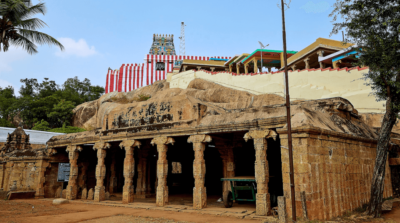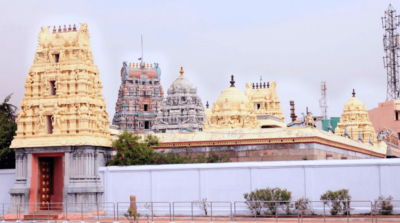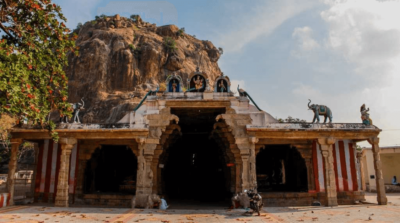Cheyyur Kandaswamy Murugan Temple
The history of Cheyyur’s Kandaswamy Temple reflects the cultural, religious, and architectural contributions of the Chola dynasty, believed to have constructed it in the 10th century AD. Cheyyur itself, once known as Valavapuri, has a deep-rooted history as a religious and pilgrimage site on the southeastern coast of India.
Cheyyur Kandaswamy Murugan History
According to local legends, the temple is associated with Lord Murugan, who is revered as Kanthaswamy in Tamil culture. It is said that Murugan defeated the demon Sooran and his son Iraniyeswaran here. After the victory, to absolve himself of any sins incurred during the battle, he installed a Shivalingam known as Somanatheswara and worshipped it. This unique association of Murugan and Shiva worship in one temple is significant, as it highlights the integration of Saiva (Shiva) and Murugan worship practices, common in Tamil Nadu’s devotional history.
Architectural Significance
The temple architecture is an excellent representation of Chola craftsmanship, though the structure has undergone modifications and restorations over the centuries. The temple is notable for its unique features, such as a flat Rajagopuram (main entrance tower) instead of the typically towering ones seen in Tamil temples. There is also a Dwajasthambam (flagpole) near the sanctum sanctorum, while the presiding deity, Lord Kanthaswamy, faces east within a south-facing temple—a layout considered auspicious in traditional Dravidian architecture.
Inside the temple, the intricately carved pillars showcase various deities, including Yoga Narasimhar, Mariyamman, Lakshmi Narasimhar, and Swami Aiyappan. The temple is guarded by statues of Brahma and Vishnu at the entrance of the main sanctum, an unusual feature for a Murugan temple. Templeditionally, the temple houses idols representing the 27 Boodha Ganangal, each associated with one of the 27 stars in Hindu astrology.
Cheyyur Kandaswamy Murugan Temple Festivals
The temple has a long-standing cultural significance, especially as one of the three main Kandaswamy temples in Tamil Nadu, drawing devotees from across the state. Celebrations like Kanda Sashti, Thai Poosam, and Aadi Pooram are conducted with fervor and ritual, often accompanied by folk performances and processions.
Saint Arunagirinathar, a revered Tamil poet-saint and devotee of Murugan, is said to have visited the Kandaswamy Temple and composed hymns in praise of the deity. His verses, part of the Thirupugazh, are still sung by devotees, lending the temple a designation as a Thirupugazh Sthalam—a place celebrated in Tamil spiritual literature.
Modern-Day Recognition
Today, the Kandaswamy Temple stands not only as a place of worship but also as a testament to Tamil Nadu’s architectural heritage and religious history. Its unique traditions, such as the absence of a Dakshinamoorthy shrine (a rarity for temples from this era), and the presence of multiple deities from different Hindu traditions make it a distinctive cultural site. The temple remains a vibrant part of Cheyyur’s identity, hosting large crowds during festival seasons, and is a cherished historical and religious landmark in the Chengalpattu District.




